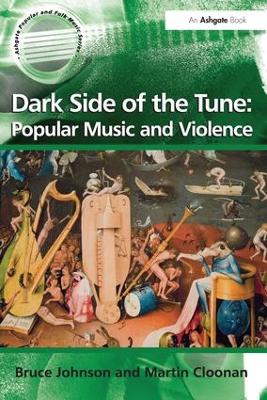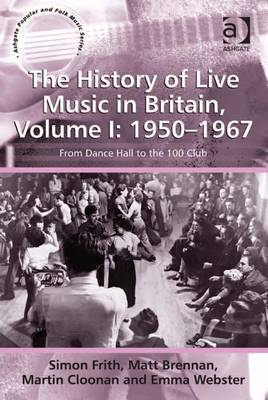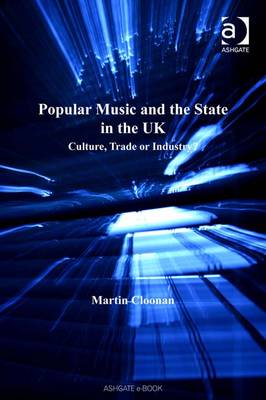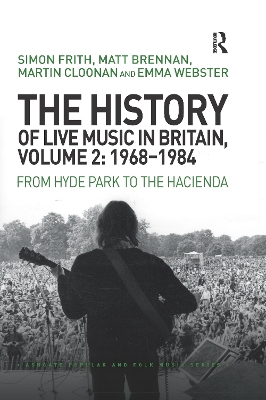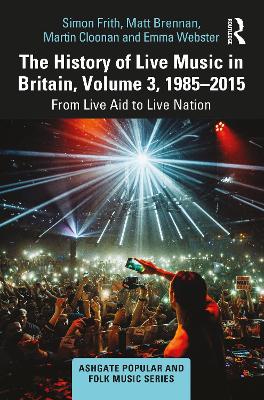Ashgate Popular and Folk Music
5 total works
Dark Side of the Tune: Popular Music and Violence
by Professor Bruce Johnson and Professor Martin Cloonan
The History of Live Music in Britain, Volume I: 1950-1967
by Simon Frith, Matt Brennan, Professor Martin Cloonan, and Emma Webster
The social history of music in Britain since 1950 has long been the subject of nostalgic articles in newspapers and magazines, nostalgic programmes on radio and television and collective memories on music websites, but to date there has been no proper scholarly study. The three volumes of The History of Live Music in Britain address this gap, and do so from the unique perspective of the music promoter: the key theme is the changing nature of the live music industry. The books are focused upon popular music but cover all musical genres and the authors offer new insights into a variety of issues, including changes in musical fashions and tastes; the impact of developing technologies; the balance of power between live and recorded music businesses; the role of the state as regulator and promoter; the effects of demographic and other social changes on music culture; and the continuing importance of do-it-yourself enthusiasts. Drawing on archival research, a wide range of academic and non-academic secondary sources, participant observation and industry interviews, the books are likely to become landmark works within Popular Music Studies and broader cultural history.
In an era of the rise of the free market and economic globalization, Martin Cloonan examines why politicians and policymakers in the UK have sought to intervene in popular music - a field that has often been held up as the epitome of the free market form. Cloonan traces the development of government attitudes and policies towards popular music from the 1950s to the present, discovering the prominence of two overlapping concerns: public order and the political economy of music. Since the music industry began to lobby politicians, particularly on the issue of copyright in relation to the internet, an inherent tension has become apparent with economic rationale on one side, and Romantic notions of 'the artist' on the other.
Cloonan examines the development of policy under New Labour; numerous reports which have charted the economics of the industry; the New Deal for Musicians scheme and the impact of devolution on music policy in Scotland. He makes the case for the inherently political nature of popular music and asserts that the development of popular music policies can only be understood in the context of an increasingly close working relationship between government and the cultural industries. In addition he argues that a rather myopic view of the music industries has meant that policy initiatives have lacked cohesion and have generally served the interests of multinational corporations rather than struggling musicians.
The History of Live Music in Britain, Volume II, 1968-1984
by Simon Frith, Matt Brennan, Martin Cloonan, and Emma Webster
To date, there has been a significant gap in work on the social history of music in Britain from 1950 to the present day. The three volumes of Live Music in Britain address this gap and do so through a unique prism—that of live music. The key theme of the books is the changing nature of the live music industry in the UK, focused upon popular music but including all musical genres. Via this focus, the books offer new insights into a number of other areas, including the relationship between commercial and public funding of music, changing musical fashions and tastes, the impact of changing technologies, the changing balance of power within the music industries, the role of the state in regulating and promoting various musical activities within an increasingly globalised music economy, and the effects of demographic and other social changes on music culture. Drawing on new archival research, a wide range of academic and non-academic secondary sources, participant observation and a series of interviews with key personnel, the books have the potential to become landmark works within Popular Music Studies and broader cultural history. The second volume covers the period from Hyde Park to the Hacienda (1968–84).
The History of Live Music in Britain, Volume III, 1985-2015
by Martin Cloonan, Simon Frith, and Emma Webster
To date there has been a significant gap in existing knowledge about the social history of music in Britain from 1950 to the present day. The three volumes of Live Music in Britain address this gap and do so through a unique prism—that of live music. The key theme of the books is the changing nature of the live music industry in the UK, focused upon popular music but including all musical genres. Via this focus, the books offer new insights into a number of other areas including the relationship between commercial and public funding of music; changing musical fashions and tastes; the impact of changing technologies; the changing balance of power within the music industries; the role of the state in regulating and promoting various musical activities within an increasingly globalised music economy; and the effects of demographic and other social changes on music culture. Drawing on new archival research, a wide range of academic and non- academic secondary sources, participant observation and a series of interviews with key personnel, the books have the potential to become landmark works within Popular Music Studies and broader cultural history. The third volume covers the period from Live Aid to Live Nation (1985– 2015).
